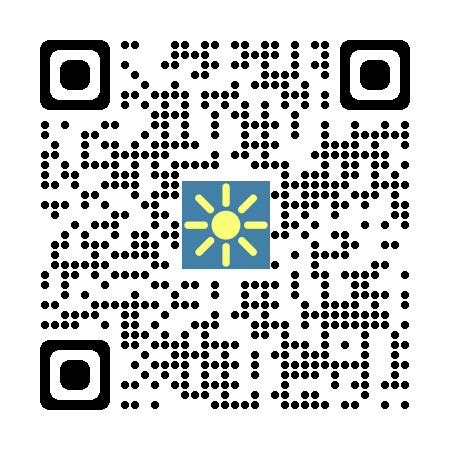
Katherine Swancutt is researching ‘Ethnological and Priestly Visions of Environmental Science and Animistic Forestry Rites’. She is documenting
ecological initiatives and new animistic rituals for forestry protection across the Liangshan mountains of Southwest China, working closely
with Nuosu priests, shamans, ethnologists, rural villagers, and natural scientists. To jointly explore the possibility of sourcing new visions
to address climate change, she is bringing Nuosu religious specialists, ethnologists, and rural villagers into conversation with natural scientists.
Katherine’s area of interest is shamanism, animism, and the relationships between cosmology, ecology, and the environment.
She has conducted anthropological fieldwork for more than two decades in Southwest China, Northeast Mongolia, and Northern
China. Some key themes running through her work are: cosmology and the scientific; climate change; anthropological debates
about ontology and worldmaking; deforestation and industrialization; indigeneity, health, and modernization; jokes, humour,
and parody; imagination, and aesthetics; economies of value; hierarchy and slavery; human-animal relations; indigenous
intellectuals; fame and dreams; and the emotively moving qualities of display. Publications include
Demons and Gods on Display: The Anthropology of Display and Worldmaking (special issue of
Asian Ethnology, 2023);
Crafting Chinese Memories: The Art and Materiality of Storytelling (Berghahn, 2021);
Animism Beyond the Soul: Ontology, Reflexivity, and the Making of Anthropological Knowledge
(special issue of Social Analysis, 2016, also published by Berghahn, 2018);
Fortune and the Cursed: The Sliding Scale of Time in Mongolian Divination (Berghahn, 2012);
numerous articles in journals such as the Journal of the Royal Anthropological Institute;
Social Analysis;
Annual Review of Anthropology;
Inner Asia; and Religion and Society: Advances in Research.
She is currently finishing a monograph on dreams that shows how Nuosu build fame through their visions of safeguarding their culture and environment.
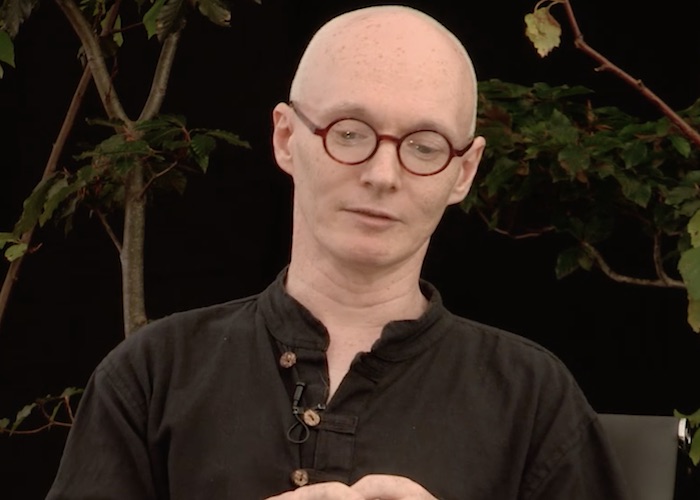
Tony Milligan is researching ‘Envisioning the Permafrost Thaw Beyond Russia: New Assemblages of Scientific Knowledge’ and ‘Envisioning Forestry Conservation
Beyond China: New Assemblages of Scientific Knowledge’. Conducting research in Siberia and Southwest China in alternate years of the project, he is
comparing the new assemblages of scientific knowledge that are produced when Russian and Chinese scientists envision how they think the world – both within
and beyond their own countries – will respond to the thawing Siberian permafrost and Chinese ecological initiatives.
Tony’s area of interest is applied ethics, with a specialism in the ethics of space exploration. His current research takes in ethical applications of
satellite data for dialogue building between scientists and indigenous peoples. The key theme uniting his areas of research is otherness (other people,
creatures, and places). Previous publications include Pravda v době populismu/Truth in a Time of Populism (2019); the co-edited
white paper on Astrobiology and Society in Europe (2018); the co-edited volume
The Ethics of Space Exploration (2016); The Next Democracy? The Possibility of Popular Control
(London: Roman and Littlefield, 2016); Animal Ethics: the Basics, (2015, 2020 Spanish edition);
Nobody Owns the Moon: The Ethics of Space Exploitation (2015); the co-edited volume Love and its Objects (2014);
Civil Disobedience: Protest, Justification and the Law (2013; Indian market edition 2017);
Love (2011); Beyond Animal Rights: Food, Pets and Ethics (2010, 2019 Korean edition). He is currently
finishing a monograph on The Ethics of Political Dissent, for Routledge, due for release in 2021.
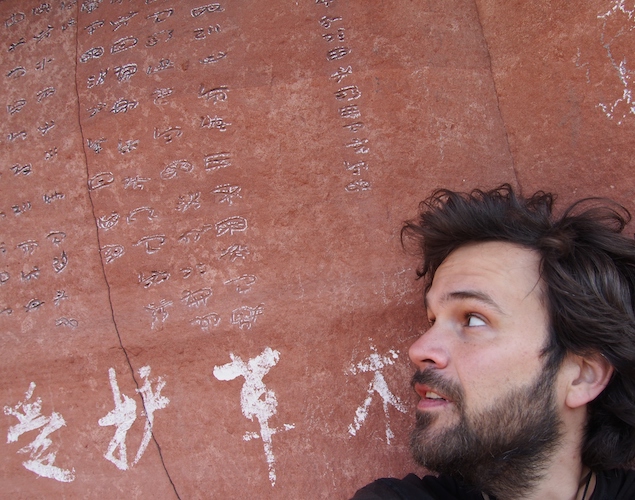
Jan Karlach is researching ‘Paths of Souls and Corridors of Chinese Scientific Modernization: Visions of Railroads, Highways, Digital Cables, and the Nuosu-Yi Cosmology’ in the Liangshan Yi Autonomous Prefecture of Sichuan Province, Southwest China. He works with Nuosu-Yi literati-ritualists and shamans to understand how Chinese economic development is absorbed into the shifting Nuosu-Yi animistic ontology. He believes that the productive relationship between science and animism could bring fresh perspectives on adaptation to climatic, cultural, and political changes. The ongoing emphasis on local knowledge within the Chinese legal framework concerning ecological protection also provides a tool for enhancing the continuity of diverse Chinese cultures and their cosmologies.
Jan’s research interests match the trajectory of his disciplinary transformation. As a sinologist, he researched the perception of the ‘other’ in Chinese classical and early modern sources. After entering the field of social anthropology, he studied a variety of themes, including the evolution of the sciences in Republican and Socialist China; the historical representation and discursive creation of Yi culture and Yi ethnicity; the implementation and reception of policies in Liangshan; the relationship between Chinese state-driven modernization, Nuosu-Yi cosmology, and animistic practices; reactions to the Covid-19 pandemic in Liangshan; and the use of digital technology in Nuosu-Yi rituals. Jan also collaborated with his research partners on the development of a divination handbook and on a number of translations between the Nuosu-Yi, Chinese, English, and Czech languages.
Publications include ‘Against the Flattening
of Ridges and Ravines: (Dis)locating Cultural Security Through Writing with the Yi of Southwest China’
(Cultural Security in Contemporary China and Mongolia, Amsterdam University
Press, 2025); ‘Between Officialdom and Nativeness: Mutually
Appropriating the State and the Nuosu-Yi Native Chieftain Clans in Southwest China’
(Journal of Chinese History 中國歷史學刊, 2025); ‘
Mythogeographies of Anthropological Knowledge: Writing over the Lines and Footsteps of History in Southwest
China’ (Journal of the Royal Anthropological Institute, 2024);
‘Hearths, Mythologies, and Livelihood Choices:
Exploring Cultural Change under Poverty Alleviation with the Nuosu-Yi of Liangshan’
(Modern China, 2023); ‘
Smartphone as Ritual Fan: Poaching in Weixin-mediated (Cyber)space with Nuosu-Yi Ritualists of Liangshan,
Southwest China’ (Journal of Digital Social Research, 2023);
‘Republikánská antropologie jako komunita praxe: Mezi
politickou ideologií Kuomintangu a formováním národa pomocí etnografického výzkumu v jihozápadní Číně /
Republican-era Anthropology as a Community of Practice: Between the Political Ideology of the Kuomintang
and Nation-Making Through Ethnographic Research in Southwest China’
(Český lid, 2023); Nuosu nyisi taji teyy ꆈꌠꑍꌋꄡꏢꄯꒉ /
The Nuosu Book of Day-calculation and Prohibition (with Jjike V and Ddisse V;
Orro nise go syr, 2019) and Čína: Střípky z jižního Podnebesí /
China: Fragments Collected in the Southern Celestial Realm (Gasset, 2012).

Lena Springer is researching ‘Scientific Visions of Reforestation in China’. Working closely with environmental scientists and experts in law, development, and
religious studies, she is mapping out their work on forestry and other forms of ecological management in Southwest China. She is observing scientists
in action, with a particular focus on how they encounter ethnicity through their efforts at implementing forest conservation in the Liangshan mountains of Yunnan province.
Lena’s area of interest is the history of science in China and Europe. She has worked on such diverse themes as medical culture and education in contemporary
China; the modern history of botanical surveys and text-based pharmacognosy in East Asia; migration and ethnicity; ethnic naming and natural science; spatial
and sociocultural mobility; the day-to-day business of supplying good-quality medicines; natural product regulation and licensing; and the educational and
occupational paths of the practitioners, scientific researchers, and teachers of medicine from China practising in Austria and the German-speaking world.
Her work has shown that Traditional Chinese Medicine (TCM) physicians, historians, and standardisers form a precarious knowledge base and a model in China for
the now widely propagated, yet highly disputed, success story of TCM and its terminologies, treatments, and adaptations. Unexpected findings from her ethnographic work and life-stories include
fundamental shifts in the history of pharmacists and the still mostly rural-based industry of materia medica suppliers throughout
China and its neighbouring regions. Her research on the sourcing and manufacture of useful plants, and on the circulation and prescription of medicines, have
led her to Southwest China, including East Tibet, Kham; the ethnic Miao territory of Guizhou Province; and the Qinling mountain range.
Previous publications include ‘TCM-Doctors from the PRC in Vienna: Hybrid Professionalism and Chinese Tradition’ in Hybridising East and West.
Tales beyond Westernisation. Empirical Contributions to the Debates on Hybridity (Münster: LIT-Verlag, 2006);
the co-authored ‘MigrantInnen aus China im Wiener Hochschul- und Gesundheitswesen: Dynamische Zwischenzonen und Einzelinitiativen’ (Migrants from China in Vienna’s
Higher Education and Health Care Systems: Dynamic In-Between Zones and Individual Initiatives) in
Migration und Integration: Wissenschaftliche Perspektiven aus Österreich Jahrbuch. (Vienna University Press, 2013);
‘Collectors, Producers, and Circulators of Tibetan and Chinese Medicines in Sichuan Province’ in Asian Medicine (2015);
‘Safeguarding Chinese Materia Medica: One Family as a Case of Transmitting Trans-Regional Pharma-Craft, and Scholarly Science in Contemporary China’ in
Austrian Academy of Sciences Working Papers in Social Anthropology (2016);
‘Taibai Materia Medica: “Unofficial Physicians” in Northwestern China’ in EchoGéo (2019).
Forthcoming publications include ‘Physicians’ Stories: On Chinese Medical Culture, 1926-2015’ (Arztgeschichten: Zur chinesischen Medizinkultur, 1926-2015) in
the book series Worlds of East Asia for the Swiss Asia Society (Berlin and Boston: de Gruyter Mouton) and
‘Encountering Linnaeus and the Modernisation of Pharmacopoeia’ in the Routledge Handbook of Chinese Medicine (London: Routledge).

Zuoxi Yueqi is researching ‘Cosmological Visions and Forestry Protection Rituals among the Nuosu of Southwest China’. Her study brings Nuosu responses to climate change into conversation with ancient Nuosu-Yi books on cosmology, the world, time, humans, and other beings. Zuoxi is particularly interested in uncovering the connections between the ritual logics of Nuosu forestry protection, their classification and use of plants, their ritual ‘violence’ towards animals, and the ways that wind and solar power stations are shaping the environment in Liangshan today.
As a Nuosu anthropologist and textual scholar, Zuoxi has published extensively on the ritual therapies of Nuosu priests and shamans. Some of her selected papers include Yueqi Zuoxi 约其佐喜 and Cai Hua 蔡华 ‘Liangshan Yizu guanyu Mafengbing de Wenhuayingdui yu Shehuigoujian 凉山彝族关于麻风病的文化应对与社会构建 / The Social Construction and Cultural Response of the Liangshan Yi to Leprosy’ (Guizhou Gongchengyingyongjishuxueyuan Xuebao 贵州工程应用技术学院学报 / Journal of Guizhou Institute of Engineering and Applied Technology, 2020); Yueqi Zuoxi 约其佐喜 ‘Liangshan Yizu Suni “Wubing” jiqizhiliaoyishi Yanjiu 凉山彝族苏尼“巫病”及其治疗仪式研究 / A Study of Shamanic “Illness” and its Ritual Treatment among the Liangshan Yi’ (Honghe Xueyuan xuebao 红河学院学报 / Journal of Honghe University, 2021); Yang Mei 杨梅 and Yueqi Zuoxi 约其佐喜 ‘Daolurenleixue Shijiaoxia Chengkuntielushangde “xiaomanche”: Yizuren Liudongde Shenghuokongjian 道路人类学视角下成昆铁路上的 “小慢车”:彝族人流动的生活空间 / The “Little Slow Train” on the Chengdu-Kunming Railway from the Perspective of Road Anthropology: The Flowing Living Space of the Yi People’ (Yuan shengtai minzu wenhua xuekan 原生态民族文化学刊 / Journal of Ecology and Ethnic Culture, 2022).
Zuoxi has also published many translations and interpretations of ancient Nuosu-Yi documents and scriptures. Her co-edited translations with other Nuosu scholars in Liangshan include: Zhoguop Nuosu Shybop Reppur (9-14 Zzitsu) ꍏꇩꆈꌠꏂꀨꏓꁏ (9-14ꋐꌠ) / Zhongguo Yiwen dianji yicong (Di 9-14 ji) 中国彝文典籍译丛 (第9-14辑) / Chinese Yi Classics Translation Collection (Series 9-14) (Published by Sichuan Minzu Chubanshe 四川民族出版社, 2017-2022). Volume 12 in this series features Yueqi Zuoxi 约其佐喜 and Ma Qubo 马曲博 ‘Nyitbbo Nyitpat ꑊꁧꑊꀿ / Suni Yuanliujing 苏尼源流经 / The Origins of Shamans’ (2020, pp. 337-355).
Elisa Tamburo, Marie Skłodowska-Curie Global Postdoctoral Fellow
The Russia Team is led by Olga Ulturgasheva and is based at the University of Manchester. You can read more about the Russia Team here: http://cosmogeorussia.com/meet-the-team/

Jan Karlach (Cosmological Visionaries, KCL) presented a talk on ‘The Fluctuating Linguistic Landscape of Xichang:
On the Back-and-Forth Between Chinese and Nuosu-Yi Languages in Liangshan, Southwest China’ at a workshop at Freie
Universität Berlin devoted to ‘Current approaches on the linguistic landscape: Case studies from Asia and Europe’.
Karlach’s talk discussed the ever-changing presence of the Nuosu-Yi language in Xichang, the administrative seat of the
Liangshan Yi Autonomous Prefecture. Historically a military garrison demarcated by a robust stone city wall, the main
language of its streets was various forms of Chinese, while the dominant language of the surrounding mountains was
Nuosu-Yi. Since the establishment of the People’s Republic of China in 1949, Nuosu-Yi, in its written and spoken forms,
gradually entered the gates of the town. Xichang proper then started to expand beyond the wall of what began to be
called the ‘old town’. During the first half of the 2020s, the old town was completely rebuilt by a developer
contracted by the local government, with the aim of attracting tourists to the region. The reconstruction wiped out
the Nuosu-Yi language, which is now slowly and creatively finding its way back into the streets of this ‘new old town’.
Drawing on visual and ethnographic evidence, Karlach’s talk addressed the political, cultural, academic, and activist
dimensions of this remarkable back-and-forth fluctuation of Nuosu-Yi vis-à-vis the dominant Chinese language. It also
uncovered meanings underpinning these shifts––and presented a vision of Liangshan’s future linguistic landscape.

Jan Karlach (Cosmological Visionaries, KCL) presented a talk on ‘“Bad Monks”, Ghosts, and Spirits
in the Borderlands of the Cool Mountains: The Transversality Between Daoism and Nuosu-Yi Indigenous Cosmology
in Southwest China’ at the 18th International Conference on Daoist Studies themed
‘Dao
and the Dark Side: Demons, Death and Dangers’. The conference was held at the Transilvania University of Brașov,
in a city regaled as the ‘green capital of Romania’. Karlach’s talk analysed the longue durée
process through which Daoism and animism have shaped both each other and the administrative,
ethnic, and topographical borderlands of Southwest China. The intertwining of these two cosmologies,
especially among the Nuosu-Yi of Liangshan, has generated new ways of envisioning and managing climate
change. Karlach showed that, due to the flexibility of Nuosu-Yi animism, local taboos
surrounding sacred forests, mountains, and other territories associated with deities, wild plants,
and animals are now harnessed in the service of environmental protection. Similarly, natural
disasters and health-related problems in Southwest China are often addressed through Daoist
techniques, which, among other things, involve summoning ancestral and animistic spirits to exorcise
the ghosts considered responsible for these disasters.

On 9 May 2025, a ‘Cartomancy Day’
held by the newly launched Divination,
Oracles, and Omens network at The Oxford Research Centre in the Humanities (TORCH) will feature a
talk by Katherine Swancutt (Project Lead of Cosmological Visionaries, KCL) titled ‘Destiny in
the Hands of a Parakeet: Half-Serious Divination at a Southwest Chinese Travelling Fair’. The event
will take place at the School of Anthropology and Museum Ethnography, University of Oxford, and will
bring together specialists of card divination to discuss the multitude of ways in which cards may be
used to shape people’s destinies. This is a follow-on event to the exhibition titled
‘Oracles, Omens and Answers’
curated by Michelle Aroney and David Zeitlyn in the ST Lee Gallery, Weston Library, Bodleian, University of Oxford.


On 8 May 2025, the newly launched
Divination, Oracles, and Omens network at The Oxford Research Centre in the Humanities (TORCH)
will host an invited roundtable on ‘Ingenuity
in Divination: Creativity, Failure, and Hunting Signs in Southwest China’ at the School
of Anthropology and Museum Ethnography, University of Oxford. The roundtable will feature talks by
Katherine Swancutt (Project Lead of Cosmological Visionaries, KCL) who will speak on ‘The
License to Improvise: Freewheeling Imagination in Nuosu Divination’, Jan Karlach (Cosmological
Visionaries, KCL) who will speak on ‘Divination and Performative Failure: When Nuosu-Yi Rituals Go
Wrong’, and Zuoxi Yueqi (Cosmological Visionaries, KCL) who will speak about ‘The Hunter’s
Path: Divining Debts and Fortuitous Tracks in Southwest China’. This event follows on from the
exhibition titled ‘Oracles,
Omens and Answers’, curated by Michelle Aroney and David Zeitlyn at the ST Lee Gallery,
Weston Library, Bodleian, University of Oxford (running from 6 December 2024 – 27 April 2025).

‘Against the Flattening of Ridges and Ravines: (Dis)locating Cultural Security through Writing with the Yi of Southwest China’
has been published by Jan Karlach (Cosmological Visionaries, KCL) in
Cultural Security in Contemporary China and Mongolia,
edited by Jarmila Ptáčková and Ondřej Klimeš for Amsterdam University Press. The chapter discusses the Yi nationality, an
ethnopolitical category constructed during the 1950s nationality recognition campaign, which is typically portrayed by the
Chinese state and its citizens as a coherent ethnic group with shared cultural characteristics. This clichéd depiction reflects
the state’s top-down cultural security imperative to present each nationality as a building block of the Chinese Nation.
However, the official Chinese narrative of ethnic coherence starts to unravel when viewed from a bottom-up perspective built
on the everyday practices of the Yi and non-Yi elites as well as of other stakeholders within the Yi nationality. Drawing on
longitudinal and multi-sited anthropological fieldwork, Karlach offers three ethnographic vignettes from Sichuan, Yunnan, and
Guizhou provinces that reveal how ritual practitioners and ordinary people from different Yi ethnic sub-branches and localities
seek to master the hegemonic voice within a wider “Yi-osphere.”

‘Between Officialdom and Nativeness: Mutually Appropriating the State and the Nuosu-Yi Native
Chieftain Clans in Southwest China’ has been published as a FirstView article online in the Journal of Chinese History
中國歷史學刊 by Jan Karlach (Cosmological Visionaries, KCL). The article shows that Southwest China is a region that has been perhaps
uniquely shaped over the longue durée by mutual appropriations of status, authority, land, material culture, genealogies, and
cultural-historical identities. Drawing on both ethnographic fieldwork and the official and unofficial Chinese and Nuosu-Yi textual
evidence, Karlach offers a new view of how, during the Ming and Qing dynasties, native officials were shaped by their efforts at
appropriating elements of officialdom (responsibility towards the court) and nativeness (adherence to local customs). The historical
textual-cum-anthropological analysis builds on C. Patterson Giersch’s notion of the ‘middle grounds’ between the Chinese state and its
borderland peoples to reveal ‘further ways’ of uncovering the history of their history. Here, mutual appropriations of officialdom and
nativeness have led to specific forms of acculturation that are neither linear nor irreversible. Cultural hybridizations underpin the
current Yi core identity and culture in Liangshan today.

Cosmological Visionaries team members took part in a recent workshop on ‘Experiencing Essence
in Chinese Religions’ hosted by the Department of Anthropology, London School of Economics and
Political Science. Katherine Swancutt (Project Lead of Cosmological Visionaries, KCL) presented
a talk on ‘The Danger of Essence and the Essence of Danger: Visions as an “Ethnographic Fact” in
Southwest China and Beyond’ and Jan Karlach (Cosmological Visionaries, KCL) presented a talk on
‘Nuosu-Yi Purities as Localized Essences’. The event was filled with exciting debates.

‘Mythogeographies of anthropological knowledge: writing over the lines and footsteps of history in Southwest China’ has been published online
in the Journal of the Royal Anthropological Institute by Jan Karlach (Cosmological Visionaries, KCL), and will appear in print in
Volume 31, Issue 3, in September 2025. In the article, Karlach delves into the field diary of Ma Changshou – a major Chinese ethnohistorian
and social anthropologist active between the 1930s and 1960s – to show how his journeys through Liangshan, a mountainous land in Southwest China
inhabited by the Nuosu-Yi, led to a new kind of anthropological knowledge. Retracing Ma’s journey in mythogeographical fashion, Karlach proposes
that the travel-fieldwork trajectories of China’s Republican-era social scientists and their interpretation of data obtained from native
chieftains, bimo ritualists, and other members of prominent Nuosu-Yi clans have shaped today’s knowledge of Nuosu-Yi history, society, and
culture. Notably, Ma’s mythogeography fleshed out two different essentialized but intertwined ways of seeing the past: that of state-bureaucratic
societies and that of genealogy-based societies like the Nuosu-Yi. Mythogeographies like this can give rise to more than new ways of performing
genealogies; they can throw light on the anthropo-history of China and the world at large.

Members of the Cosmological Visionaries team recently featured in a workshop on ‘Visions and
Indigenous Scholarship in Inner and Southeast Asia’ hosted by the Department of Mongolian, Korean,
and Vietnamese Studies, Masaryk University, in Brno, Czech Republic. Katherine Swancutt (Project
Lead of Cosmological Visionaries, KCL) gave the keynote lecture, titled ‘Visions, Visionaries, and
the Visual: The Making of Indigenous Scholarship in Southwest China’. Jan Karlach (Cosmological
Visionaries, KCL) presented an invited talk on ‘Animistic Rituals or Scholarly Knowledge? Building
Visions from Nuosu-Yi Scroll-Books’ and Zuoxi Yueqi (Cosmological Visionaries, KCL) presented an
invited talk on ‘Parallel Cosmologies: Mapping Nuosu-Yi Collaborative Visions and Textual
Interpretations’. The workshop unleashed many exciting discussions on the relationship between
visions and indigenous scholars.

Katherine Swancutt (Project Lead of Cosmological Visionaries, KCL) presented an invited
lecture titled ‘From the Depths of Our Minds and Writings: Giving Voice to Guardian Spirits in
Southwest China’ (中国西南地区本土知识分子的书写与心史), which was the second ‘Frontiers of Ethnology’
(民族学前沿进座) Lectures Series for the Yunnan Institute for Ethnic Studies, Yunnan Minzu University.
This weekend lecture brought out a highly engaged audience with marvellous discussions.

An invited roundtable on ‘Cosmoecological Dilemmas: Science, Spirits, and Society in Southwest China’
(宇宙生态之困:中国西南地区的科学、神灵与社会) was held by members of the Cosmological Visionaries team as
a special weekend event with Yunnan University. Katherine Swancutt (Project Lead of Cosmological
Visionaries, KCL) presented an invited lecture on ‘Satisfying Spirits and Science: “Taking the
Straight and Even Road” in Western Liangshan’ (互通的神灵与科学:“只走平坦路” 的西部凉山经验), while Jan
Karlach (Cosmological Visionaries, KCL) presented an invited lecture titled ‘Eco-infrastructural
Revolution in Liangshan: People, Spirits, and Places on the Move’ (凉山生态基建革命:流动中的人、神灵与地域),
and Zuoxi Yueqi (Cosmological Visionaries, KCL) presented an invited lecture called ‘Calculating Hunting
Debts: Sustainability, Spirits, and the Making of a Scientific Ecology in Eastern Liangshan’
(衡量猎债:凉山东部的生态可持续性、神灵与 “科学”). This roundtable, held over the weekend, attracted a
packed audience with highly stimulating discussions.

Three members of the Cosmological Visionaries project presented invited talks in the
‘Cosmology, Imagination, and Modernity among the Peoples of Southwest China Academic Research
Exchange Forum’ (中国西南人群的宇宙观, 想象力与现代性学术研究交流论坛) with Yunnan Minzu University.
Katherine Swancutt (Project Lead of Cosmological Visionaries, KCL) spoke on
‘Unleashing the Imagination of Car Window Anthropology’ (释放想象之车窗人类学), Jan Karlach
(Cosmological Visionaries, KCL) spoke on ‘Mythogeographies of Anthropological Wandering’
(“神活地理”:人类学之游于思), and Zuoxi Yueqi (Cosmological Visionaries, KCL) spoke on
“Walking in Anthropological Circles” (凉山人类学之困与解). This weekend forum was filled with
exciting talks and dialogues.


Two chapters by Katherine Swancutt (Project Lead of Cosmological Visionaries, KCL) have appeared
in Michelle Aroney and David Zeitlyn’s edited volume
Divination: Oracles & Omens, published by Bodleian Library Publishing. This highly
accessible volume accompanies the exhibition
Oracles, Omens and Answers, which runs from 6 December 2024 to 27 April 2025 at the ST Lee Gallery, Weston Library,
Oxford, England. Filled with images, the volume offers a comparative lens onto multiple forms of divination
from around the world and across time. Swancutt’s chapters invite readers to delve into two common and lively
forms of divination among the Nuosu of Southwest China and Buryat Mongolians.

Katherine Swancutt (Project Lead of Cosmological Visionaries, KCL), Jan Karlach
(Cosmological Visionaries, KCL), and Zuoxi Yueqi (Cosmological Visionaries, KCL) are
displaying photographs, film, audial recordings, and storyboard materials as part of the
‘Vital Signs: Another World is Possible’
exhibition at the Science Gallery London, which runs from 14 November 2024 to 17 May 2025. Their
display showcases
Nuosu visions of climate change from the COSMOVIS project.


Katherine Swancutt (Project Lead of Cosmological Visionaries, KCL) presented three invited lectures
to the Center for Anthropology and Folklore Studies, Department of Sociology, Peking University:
‘On Becoming a Visionary: Serendipity and Scholarly Visions in Southwest China’
(关于成为智者:西南地区的偶然性和学术远见), ‘On the Cosmoecology of Sacrifice: From Renewable Energy to
Nuosu Mountain Spirits’ (关于祭祀的宇宙生态学:从可再生能源到诺苏山神), ‘On Anthropological Dreams of
Cultural Continuity: A “Third Eye” View of Nuosu Cosmopolitics’ (关于人类学的文化延续之梦:
诺苏宇宙政治的“第三只眼”视角). The third lecture formed part of an invited roundtable on ‘Cosmological
Visionaries and Anthropological Imagination in Southwest China’ (中国西南的宇宙观视野与人类学想象) that
included an invited talk by Jan Karlach (Cosmological Visionaries, KCL) titled ‘Yi Cosmology and its
Absorption of Science: On the Meeting of Local and Global Knowledges in Southwest China’
(彝族宇宙论及其对科学的吸纳:关于西南地区本土与全球知识相遇) and an invited talk by Zuoxi Yueqi
(Cosmological Visionaries, KCL) titled ‘Cosmology, Myth-history, and Turning Chaos into Order with
Nuosu-Yi Scholars’ (与诺苏彝族学者同行:宇宙论,神活历史以及混沌的秩序化). This weekend event attracted a
wonderfully engaged audience and excellent discussions.

Robin Visser’s marvellous book about the ecoliteratures of China and Taiwan has been reviewed by Katherine Swancutt (Project Lead of Cosmological Visionaries, KCL) in The China Quarterly. The book throws light on how Indigenous, Indigene, and ethnic majority writers from Southwest China, Inner Mongolia, Xinjiang, Tibet, and Taiwan envision new ways of relating to their unknown ecological futures and the nation-states in which they live. Visser’s important discussion of Indigenous creativity and future-oriented uses of technology – which cover everything from renewable energy sources to the production of ecoliterature itself – resonate with the goals of the ‘Cosmological Visionaries’ project. Her book sets out to decentre both colonial and popular assumptions about Indigenous people, lives, and planetary visions. Indigenous ecoliterary visions and poetry have increasingly become part of the animistic repertoire in Liangshan, which inform new approaches to managing the ecology in Southwest China.

‘Dreams, Visions, and Worldmaking: Envisioning Anthropology Through Dreamscapes’ by Katherine Swancutt (Project Lead of Cosmological Visionaries, KCL) has been published in Annual Review of Anthropology, Volume 53. Her article asks: What does it mean to envision or dream a world into existence? Dreams and visions are often deeply personal and private experiences, but they also open up social spaces for worldmaking. From Australian Aboriginal ‘Dreamtime’ to the ethnographic dreams of anthropologists and their research partners, many dreams and visions are entangled with the historical and analytical trajectories of anthropology. Swancutt sets out in this article to stretch further the anthropological imagination about the kinds of dreams and visions that may emerge from any dreamscape. To this end, she shows that the anthropology of dreams and visions is built on more than the interpenetration of dreaming and waking life, metaphysical questions, problems of communication and interpretation, active or passive dreaming, the powerful idioms that dreams afford for collective visions, or nightmares and metaphorical dreaming. Myriad dreams and visions also unfold as what she calls cosmological visions that shape anthropology and vice versa.

Katherine Swancutt (Project Lead of Cosmological Visionaries, KCL) presented the invited talk
‘Hidden Visionaries: Uncovering Guardian Spirits, Indigeneity, and Historically Situated
Consciousness in Southwest China’ for the symposium ‘An Anthropology of the Imaginal:
Attending to What Seeks Expression in Mindsets and Social Conditions’ held at the Institute
of Anthropological and Spatial Studies, Research Centre of the Slovenian Academy of Arts and
Sciences. Her talk showed that many scholars among the Nuosu of Southwest China set out to produce
new visions that can make the leap from their own scholarly work to wider social life. Key to these
scholarly visions is not only their emotively moving qualities but also the ways in which they evoke
the visual side of life more generally. Some visionary Nuosu are adept at uncovering guardian
spirits—which take specific visual forms—and integrating them into a wider understanding of
all things Nuosu. Many Nuosu scholars tend to favour their own visions, while still promoting the
value of personal visionary experiences and of maintaining a pluralistic vision of their indigeneity.

Jan Karlach (Cosmological Visionaries, KCL) is giving an invited talk ‘Měnící se Čína: kultura, etnicita a ekologie na příkladu jihozápadní oblasti (China in Transformation: Culture, Ethnicity, and Ecology in the Southwest)’ at the Ministry of Foreign Affairs of the Czech Republic. His talk will discuss how, until recently, the hinterlands of Southwest China were considered exotic and, compared to the coastal provinces, underdeveloped and difficult to access. Yet thanks to its ethnic diversity and the ethnographic research of Chinese anthropologists, Southwest China played a crucial role in the construction of Chinese national identity in the 1930s and 1940s. It furthermore became known as one of the most biodiverse places in the world. Over the last fifteen years, however, China’s central and local governments have invested massively in highway, rail, aviation, energy and internet infrastructure. As these investments took shape, they brought unprecedented changes not only to the cultures of the local non-Han ethnic groups in Southwest China, but also to the science, education and overall position of this region within the entire country. Some of these changes are evident in how extreme climate change is being managed now, as many of its inhabitants set out to develop adaptation strategies in collaboration with the state. Southwest China therefore offers a number of challenges, but also opportunities for international cooperation.

‘Antropologie v socialistické Číně: Od ústřední úlohy při konstrukci národní identity po orámování globální Iniciativy pásmo a cesta (Anthropology in Socialist China: From Principal Role in National Identity Construction to Framing of the Global Belt and Road Initiative)’ has been published in volume 122, issue 2 of Český časopis historický (The Czech Historical Review) by Jan Karlach (Cosmological Visionaries, KCL) and Jarmila Ptáčková (Oriental Institute, Czech Academy of Sciences). The core of their article analyses the historical development of Chinese anthropology from 1949 to today. Mapping the parallel development of anthropological terminology, thinking and practices, which together provided a scientific-theoretical basis for the subsequent political-ideological formation of the structure of the Chinese nation, the article shows that a bricolage of ethnopolitical categories are at play in today’s China. These categories came into being through a synergy of gradually indigenized theories of Soviet, European, and American humanities and social sciences. Here, the historical experience of Chinese anthropology is shown as being projected beyond China’s borders, where it theoretically underpins the global political-economic strategy of the ‘Belt and Road Initiative’.

Katherine Swancutt (Project Lead of Cosmological Visionaries, KCL), Jan Karlach (Cosmological Visionaries, KCL), and Zuoxi Yueqi (Cosmological Visionaries, KCL) will present a lecture titled ‘Three Cosmological Visions of Climate Change: Mountain Spirits, Scientific Rewilding, and Sacred Forests in Southwest China’ on 2 July 2024 at the Oriental Institute of the Czech Academy of Sciences. Their lecture, which will be part of the Power Seminar Series, reflects on Southwest China’s complex topography, rich biodiversity, and intricate ethnic composition. For centuries, the towering mountain ridges and deep valleys of this geographic region have made its indigenous inhabitants especially prone to extreme weather. Disasters caused by landslides, floods, winds, and drought are well-recorded in history and have only increased since imperial times due to migration and the uptake of technologies that led to large-scale deforestation. Recent decades have seen rapid industrialization and the acceleration of climate change. Yet local scientists, governments, and indigenous communities all have their own ways of managing their environments. Their visions of a future rooted in diverse cosmologies throw valuable light not only on how the post-carbon world might look but also on how the relationships between science, animistic religion, and the politics of climate change are unfolding on local and global scales. The three anthropologists on the ‘Cosmological Visionaries’ project––Swancutt, Karlach, and Yueqi––will discuss their collaborations with scientists and Nuosu-Yi animistic people in three different locations. Multiethnic Ninglang County lies at the foot of the Himalayan massif, and is part of the Hengduan Mountains, one of the most biodiverse regions in the world. Its inhabitants give voice to priestly texts when holding sacrifices to mountain spirits that have been disturbed by the build-up of windfarms, solar farms, and electric masts. Their scriptural voicings bring to life their dreams of maintaining the mountain spirit’s protection in the face of natural disasters. In Kunming, the capital of Yunnan Province, scientists around the heavily polluted Dian Lake experiment with (re)building the natural environment through a twofold process that starts with the ‘gardenification’ of natural habitats and finishes with their (re)wilding. Finally, the religious specialists of the Cool Mountains (Liangshan) in neighbouring Sichuan Province seek to preserve their sacred forests with complex rituals that are meant to reduce the man-made risk of soil erosion. Each of these strategies can shape our thinking about how we relate to our own immediate environments and how we might ensure the sustainable future of the planet.
Recordings of these lectures have kindly been made available by the Oriental Institute of the Czech Academy of Sciences on their YouTube channel:
Jan Karlach Cosmological Visions of Ecology (Shengtai 生态): Gardenification of Ecosystems and Scientific Rewilding in Southwest China
Zuoxi Yueqi Nuosu-Yi Cosmological Concept of Sacred Forests and the Relevant Rituals in Liangshan
Katherine Swancutt 'Do Not Disturb the Mountain Spirit': Script, Voice, and Visions in Southwest China

Katherine Swancutt (Project Lead of Cosmological Visionaries, KCL) will present an International Guest Lecture titled ‘Melding Script into Voice: The Social Lives of Dreams, Mountains, and New Energy Technologies in Southwest China’ on 4 July 2024 at the Institute for Social Anthropology, Austrian Academy of Sciences. Her lecture will explore how the melding of script and voice brings to life the dreams of religious specialists, ordinary people, and spirits. Scriptural voicings among the Nuosu, a Tibeto-Burman group of Southwest China, often unfold as riffs on the religious texts of their animistic priests, which may be ritually used to make dreams and wishes a reality. One common dream fulfilling ritual across the Liangshan mountains is the sacrifice to the local mountain spirit, which many Nuosu beseech to grant them health, prosperity, fertility, growing numbers of livestock, strength in every endeavour, wealth, success in business, feasts with neighbours, a lack of disputes, and to have their speech and actions protected. Going further, many Nuosu ask their mountain spirit to stay, rather than leave the area, even when they dig up or plough into its territory. Disturbing the mountain spirit may cause it to retaliate against people, their grains, and livestock––or to simply withdraw its protection by ‘moving house’. Yet keeping mountain spirits in place has become increasingly challenging as new energy technologies such as wind turbines and solar panels are installed deep into the earth to manage climate change. This lecture shows how several ordinary Nuosu men gave scriptural voice to a priestly text during a sacrifice to their local mountain spirit, which supported their own dreams of being protected by it well into the future.

Stevan Harrell’s watershed volume about the ecological history of modern China – including its relationship to the cosmologies of China Proper, Central Asia, and ‘Chinese Zomia’ inhabited by the Nuosu of the Liangshan mountains – has been reviewed by Katherine Swancutt (Project Lead of Cosmological Visionaries, KCL) in The China Quarterly. The book explores China’s highs, lows, and remarkable ingenuity in tackling ecological challenges from the founding of the People’s Republic to the present. Harrell’s vibrant discussion of the ecological landscapes of China dovetails with the core theme of the ‘Cosmological Visionaries’ project. His book shows that an ecology is, at heart, an assemblage of people, animals, plants, social institutions, family relations, politics, art, religion, and more that is shaped as much by its inner dynamics and resilience as by the forces that lie outside it. Arguably, visions for managing climate change are part of the assemblage that makes up any ecology – which points to the potential for animistic visions in Liangshan to create new modes of ecological recovery in Southwest China.

The guest lecture by Jan Karlach (Cosmological Visionaries, KCL) on ‘Ethnicity and Literature – The (Nuosu) Yi of Southwest China’ reflected on the indigenization of the concept of ‘ethnicity’ in late imperial, republican, and communist China with reference to literary works by the Nuosu-Yi of Sichuan Province. Yi literature emerged from the ritual lives of Nuosu-Yi ritual specialists and in recent decades it has shaped the construction of Yi ethnicity. Drawing on the poetry of Aku Wuwu, its performances, and the short prose of Yiwu, Karlach discussed the intricate relationships between Nuosu-Yi ethnicity, literature, and religion.

In his seminar ‘“Science Scared the Ghosts and Spirits Away”: Mountain Worship, Catastrophe Prevention and Environmental Protection among the Nuosu-Yi of Liangshan’ presented at Trinity College Dublin, Jan Karlach (Cosmological Visionaries, KCL) reflected on the unprecedented changes that the Chinese state-driven poverty alleviation campaign has brought to the Liangshan mountains of Sichuan Province. The modernization push in China has led to numerous environmental challenges––including the shift it has caused in Nuosu-Yi thinking about the environment. As indigenous forms of knowledge are co-opted into the Chinese state’s ‘scientific’ approach to environmental protection, so the Nuosu-Yi are choosing to turn away from their indigenous visions of the world and towards Chinese economic development. This has given rise to a remarkable paradox in which Nuosu-Yi practices of mountain worship are often disentangled from environmental protection policies. Listen to the talk here.

Katherine Swancutt (Project Lead of Cosmological Visionaries, KCL) presented ‘Dreaming Big and Small: The Sublimation of Art and Scholarship in Southwest China’ at the Religion and Society Seminar in the Department of Theology and Religion, Durham University. Discussing new research on dreaming among the Nuosu of Southwest China, she compared the big and small dreams of ethnohistorians and musicians who seek to transmit Nuosu culture across the generations. Swancutt’s talk highlighted how artistic acts of sublimation may be used to promote cultural continuity.

Smartphone as Ritual Fan: Poaching in Weixin-mediated (Cyber)space with Nuosu-Yi Ritualists of Liangshan, Southwest China has been published in the Journal of Digital Social Research (volume 5, issue 4). The article shows how the Nuosu-Yi literati-ritualists of Southwest China, known as ‘bimo’, use the ubiquitous Chinese all-in-one Weixin (WeChat) app in ways unforeseen by their developers. Jan Karlach (Cosmological Visionaries, KCL) takes a ‘nethnographic’ approach in the article, which features an ethnography of culturally conditioned simultaneous online and offline practices. He shows that bimo use their smartphones to poach the property of those who designed the app primarily for the Chinese-speaking majority. Both the bimo and the technology they use, then, are transformed by the modernization and technologization push of the Chinese authoritarian state. The resultant techno-culture does more than build upon, reinvent, develop, and reinforce the allegedly diminishing Nuosu-Yi folkways and their inter-clan competition – it feeds the state-approved Yi folklore. Here, the top-down computerization of society and the bottom-up socialization of technology is intrinsically connected to the culturally conditioned use of technology in everyday life.

Katherine Swancutt (Project Lead of Cosmological Visionaries, KCL) joined the China Week panel of experts, moderated by Thomas White of the Lau China Institute at King’s College London, for an evening’s discussion of ‘Minority Education in the Xi Era’. The panel provoked exciting reflections from faculty and students on this all-important theme.

Katherine Swancutt (Project Lead of Cosmological Visionaries, KCL) gave a keynote lecture on ‘Envisioning the Future as a Complete Cosmology: Power, Value, and Autonomy in Animistic Approaches to Science’ at the British Association for the Study of Religions (BASR) annual conference under the 2023 theme of ‘Environmental Endings and Religious Futures’ at Clare College, University of Cambridge. Presenting some of her latest work on the relationship between cosmology and ecology in Southwest China, Swancutt showed how animistic ways of engaging with science may sometimes unexpectedly strengthen indigenous values and autonomy.

Hearths, Mythologies, and Livelihood Choices: Exploring Cultural Change under Poverty Alleviation with the Nuosu-Yi of Liangshan has been published in Modern China (volume 49, issue 5). In late 2020, the Chinese Communist Party triumphantly declared an end to (absolute) poverty in the country. As one of the most poverty-stricken areas of China, the Liangshan Yi Autonomous Prefecture in Sichuan province came into the spotlight both domestically and internationally. International media reports, some of which embedded fragments of the author’s expert opinion, launched a discursive counter-offensive. Both sides incorporated anecdotes told by Nuosu-Yi individuals. Interested in discursive hegemony rather than informants’ voices, however, both sides also somewhat conveniently failed to grasp the complex interplay between the everyday lives of Nuosu-Yi and the state-driven poverty alleviation campaign. Focusing on the creative livelihood strategies and choices reflected in the everyday practical and ritualistic treatment of the traditional Nuosu-Yi hearth, Jan Karlach (Cosmological Visionaries, KCL) analyses the tensions between (re)presentations of poverty and the Nuosu-Yi cosmology, which may absorb these same tensions and facilitate the preservation and/or reinvention of Nuosu-Yi lifeways.


While on fieldwork with the project team in Southwest China, Katherine Swancutt (Project Lead of Cosmological Visionaries, KCL) presented a lecture called ‘“Only One Tree was allowed to Remain Standing”: Visions of Science and Animism in Southwest China’ at Yunnan Normal University in Kunming, China. Her lecture reflected on the complex relationships between a new animistic vision used to tackle deforestation and animistic counter visions in support of logging among the Nuosu in Yunnan province. Jan Karlach (Cosmological Visionaries, KCL) presented some opening remarks for the lecture, and together with Swancutt’s talk, this provoked much stimulating debate with faculty members and students.
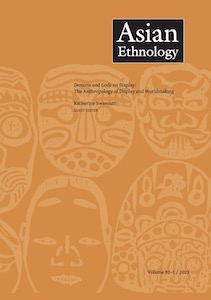
Edited by Katherine Swancutt (Project Lead of Cosmological Visionaries, KCL), ‘Demons and Gods on Display: The Anthropology of Display and Worldmaking’ (volume 82, issue 1 of
Asian Ethnology) brings together eight scholars of Asia who show how display underpins new imaginaries of the cosmos in such diverse settings as a shamanic ceremony or temple festival (Laurel Kendall and Ni Wayan Pasek Ariati), a procession of demon puppets (Kari Telle), the parade of a goddess (Teri Silvio), the strange company of gods and flags on an altar (Janet Alison Hoskins), the unfurling of a flag that evokes moral ideals of cultural heritage and plurality (Heonik Kwon and Jun Hwan Park), and the competitions, pageants, and rituals held to repay debts to a sky god (Katherine Swancutt). Covering Korea, Bali, Indonesia, Taiwan, Vietnam, Southwest China, overseas Asian communities in the USA, and the travels that certain eminent shamans have made from Asia to worldmaking events such as the World’s Fair, the contributors to this special issue explore how display becomes transformative for people, spirits, gods, demons, and their effigies or emblems in religious and museum contexts alike.
Swancutt’s ‘Guest Editor’s Introduction’ positions the special issue as a field-setting volume on display and the creative process of worldmaking. The special issue introduces ‘the anthropology of display’ as a subfield in its own right that illuminates how people, spirits, gods, demons, ghosts, and their ritual props, offerings, effigies, or emblems manifest their powers and presence. A display is not just the static or unmoving framing of an image that invites contemplation rather than participation; it may unfold as one of the many moving, lively, and performative parts in a public event that generates deeply recursive imaginaries of the cosmos. Bringing the anthropology of religion, magic, exchange, art, and performance into conversation with museum anthropology, the special issue shows that display is often used to push at the edges of the social and cosmic order. People and spirits may harness the power of display to steer rituals, ceremonies, and festivals in their preferred directions. Displays of this sort may unleash moral ideals of cultural heritage and plurality, aesthetic deliberations about the future, and new anthropological ways of envisioning the human and otherworldly.
Many of these themes are addressed in Swancutt’s ‘The Time of Red Snowfall: Steering Social and Cosmic Renewal in Southwest China’, which shows how the Nuosu, a Tibeto-Burman group of Southwest China, celebrate their annual Fire Festival with vibrant displays that evoke the myth-historical blunder of a hero killing a spirit. To atone for this blunder, they compete in arts and sports before spectators, judges, and the sky god, who receives their displays as ritual blandishments and expresses his satisfaction by sparing lives. These two-way displays typically continue until Nuosu pay their sacrificial debt to the sky god through the ritual for ‘the descent and exchange of the soul’. But many Nuosu approach the Fire Festival differently in the northeastern Liangshan mountains, where they seek to avoid summoning red snowfall, a euphemism that refers to a generations-old war, extreme bloodshed, and perhaps even the origins of humankind. Here, Nuosu call their sacrifices to the sky god ‘turning back the enemy’ and move their competitions to unconventional days that fall outside of the Fire Festival’s celebratory window. By steering this season of social and cosmic renewal in a prosperous direction, Nuosu across Liangshan engage in worldmaking acts that show the conceptual value of the anthropology of display.

‘Moved to Distraction: The Ritual Theatre of the Fire Festival in Southwest China’ by Katherine Swancutt (Project Lead of Cosmological Visionaries, KCL) has been published in Religion, Volume 53, issue 3, as part of a special issue titled ‘Festivals in Asia: Patronage, Play, and Piety’ edited by Mark Teeuwen, Moumita Sen, and Aike P. Rots. The article asks what it means to be ‘moved to distraction’ by ritual theatre. Each year the Nuosu, a Tibeto-Burman group of Southwest China, may be moved by their Fire Festival competitions, pageantries and ‘extravaganzas’, but not necessarily by the Chinese nationalist elements within them. Simulating the pageants of Chinese megacities, Fire Festival extravaganzas meld Nuosu myth-history, animistic imagery, and ‘minority culture’ with the Chinese dream of prosperity, the party-state’s efforts at generating cohesion, and the soft power of stadium rock concerts. Many Nuosu are abducted into the mood of performances that evoke what is archetypically human for them, including their myth-historical relationships to Tibetans and Han Chinese. But while some Nuosu may experience frisson and the giddy sense of being moved to distraction by spectacles that celebrate China as a socialist superpower, many turn away from ritual theatre that challenges their cosmopolitics and their sense of what it means to be human.

The King’s College London Net Gains? Living Well with Technology series has just posted a new feature by Tony Milligan (Cosmological Visionaries, KCL) on ‘How space exploration is bringing us back down to Earth’. This short feature explains why our anthropocentric assumptions about outer space — and our over-separation of Earth and space — may be making it difficult to think of Earth in planetary terms. Over-separation involves a ground bias which compromises our ability to respond to climate change. Milligan briefly explains his concept of ground bias as a tendency not only to be skeptical about the value of conducting planetary science elsewhere but also to focus our attention upon where the humans are at the expense of a larger set of planetary processes on Earth.
IMAGE CREDIT: NASA/Scott Kelly, ‘The places we call home’ (2021)

To celebrate Earth Day (世界地球日) 2023, a new collection of Science Fiction Stories and linked scientific commentaries has been published by the European Astrobiology Institute. The volume includes a short story by award winning African Australian author Eugen M. Bacon and a commentary by Tony Milligan (Cosmological Visionaries, KCL). Bacon’s story, ‘Human Beans’, looks at issues of exclusion, gender, movement, and the transfer of life from one place to another and better place. Milligan’s commentary, ‘Microbial Life and Belonging’, considers a scenario in which Bacon’s transfer of life goes wrong and only microbes survive. This leaves us with questions about how far down we can take belonging, and exactly what it is that we are looking for when we search for life that belongs to another world. The collection, Life Beyond Us: An Original Anthology of SF Stories and Science Essays is edited by science fiction authors Julie Nováková, Lucas K. Law, and Susan Forest and has an introduction by Stephen Baxter. Bacon has commented that ‘Tony and I connected with such synergy, and we’ve never met! I saw his scientific essay on my fiction “Human Beans” and went, yes! He got me’.


‘Of Cosmological Visions and Creativity: Shaping Animism, Indigenous Science, and Forestry in Southwest China’
by Katherine Swancutt
(Project Lead of Cosmological Visionaries, KCL) has been published in Religions,
Volume 14(4), 449, as part of a special issue titled ‘Religion, Science and Technology in Pantheism, Animism and Paganism’
edited by Gorazd Andrejč and Victoria dos Santos. The article, which came out of a keynote lecture delivered at the
University of Groningen on 23 September 2022, asks: How do cosmological visions unsettle animistic and scientific ways of
approaching the world? Whereas ‘cosmovisions’ have the narrow meaning of ‘worldviews’, people unleash new
‘cosmological visions’ through the creative act of relating to—and simultaneously dismantling—their constructs of the world
at large. Drawing on ethnography of the Nuosu, a Tibeto‑Burman group of Southwest China, the article shows how an
ethnohistorian and a priest set out, at the request of a local official, to address deforestation with a cosmological
vision built upon animistic, indigenous scientific, social scientific, and natural scientific sensibilities. Holding
sacrifices to land spirits across the Liangshan mountains of Yunnan province in the mid‑2000s, they urged Nuosu to
refrain from cutting down trees. Many Nuosu in the lumber trade responded with a counter vision that showed respect
for land spirits but an unprecedented detachment from the world in animistic‑cum‑scientific terms. Cosmological visions
like these proliferate among Nuosu, encouraging them to experiment with everything from testing the patience of land
spirits to undercutting the science behind China’s forest protection policies. Here, creativity opens up new ways of
envisioning indigenous autonomy and what it means to be alive to the world as an animist, a scientist, or both.

Tony Milligan (Cosmological Visionaries, KCL) has just published a chapter on Indigeneity and the Three Body Problem in an innovative new edited collection called Reclaiming Space: Progressive and Multicultural Visions of Space Exploration (Oxford University Press). The volume, looking at critical approaches to space exploration, is edited by James S.J. Schwartz (Assistant Professor of Philosophy, Wichita State University), Linda Billings (Consultant, Planetary Science Division, Science Mission Directorate, NASA), and Erika Nesvold (Astrophysics Engineer). The chapter considers the opportunities opened up through the inclusion of Indigenous storytelling about origins within discussions of space and ethics. Drawing an analogy with the three-body problem in celestial mechanics, the paper points out that such inclusion may help us to see that there is no fixed point, no core principles, around which everything else in space ethics must revolve. Three pathways to the inclusion of Indigenous Knowledge are considered but their combination points towards a multiplicity of things that matter from an ethical point of view.

To mark this year’s Valentine’s Day, Tony Milligan (Cosmological Visionaries, KCL) was asked to submit a short piece for The Conversation, ‘A brief history of the soulmate - and why it's a limited concept’. This short text draws upon Dr Milligan’s ongoing research into love’s temporality, and his attempt to make sense of the relationship between love, humanity, and time as a counterpart to his research on humanity, identity, and space. The paper looks at the origins of our concept of the soulmate, considers Dante’s account of what happens when soulmates turn out to be bad for one another, and extends very briefly into consideration of the haunted sense of love and loss in Nishida Kitaro’s Kyoto School philosophical texts. The Conversation piece glosses ideas explored more fully in Dr Milligan’s recent ‘Mortal Longings’, published in Salskov, Beran, and Hämäläinen’s edited volume titled Ethical Inquiries after Wittgenstein (2022), and in his ‘Abandonment and the Egalitarianism of Love’ published in Fedock, Kühler and Rosenhagen’s edited volume Love, Justice, and Autonomy: Philosophical Perspectives (2021). Both these works consider love’s end and why we often seem to care for what is fragile and transitory, rather than enduring. Dr Milligan discusses this further in an interview for 95bFM in Auckland.

Tony Milligan (Cosmological Visionaries, KCL) has just published ‘Inclusion and Environmental Protection in Space’ in the space-themed section of the new issue of The Brown Journal of World Affairs, volume 29, issue 1. The article brings together his recent work on Indigeneity and human activities in space and sets out a dilemma concerning inclusion and environmental protection: that the best interests of inclusion might well be served by a rapid process of expansion. Rapid expansion would allow us to take advantage of further opportunities for Indigenous inclusion in an area of human activity, subject to limited inertia of the past. Environmental protection in space, by contrast, may be best served by ‘slow space’, allowing for the containment of problematic activities that yield short term advantages. The upshot is that at least some environmental responsibilities may end up being pushed into the future in the interests of Inclusion. This prospect requires a certain kind of trust in future generations to advance justice in the present in a clearly available way.

Tony Milligan (Cosmological Visionaries, KCL) has just published a chapter on 'Indigenous Inclusion within the Democratization of Space' in Charles S. Cockell’s new edited volume with Oxford University Press about political liberties in relation to human expansion into space. The chapter considers co-operation between the Diné/Navajo as an exemplar for broader kinds of Indigenous-driven processes of democratisation within space programs. It links the argument from belonging first set out in Milligan’s recent article 'From the Sky to the Ground: Indigenous Peoples in an Age of Space Expansion' in Space Policy with broader rationales for democratization. The chapter also compares the belonging argument to a liberties argument that certain kinds of broad political freedoms would be a long-term stabilizing factor in space communities – given the extreme vulnerabilities of life in space and constrained limits for dissent.
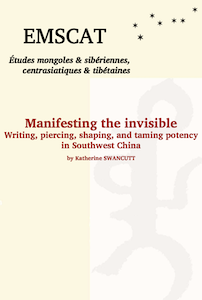
‘Manifesting the Invisible: Writing, Piercing, Shaping, and Taming Potency in Southwest China’ by Katherine Swancutt (Project Lead of Cosmological Visionaries, KCL) has been published in Études mongoles et sibériennes centrasiatiques et tibétaines as part of a special issue titled ‘Figurations chamaniques. Broderies, dessins et écritures comme interfaces entre le visible et l’invisible’ (‘Shamanic Figurations: Embroideries, Writings and Drawings as Interfaces between the Visible and the Invisible’). The article shows that potency is an often invisible form of power that becomes manifest when written deeply into bodies and things. Among the Nuosu, a Tibeto-Burman group of Southwest China, “writing” or “manifesting” (bbur ꁱ) is a vast polysemic concept rooted in the scriptures of priests, which, however, exceeds its own bounds. Nuosu manifest potency by writing it into religious scriptures and handwrought effigies, piercing it into embroidered clothing and tattooed bodies, shaping it into public statues, and taming it into animals, all of which bring animate powers and presences to life.

‘Relocating the Future: Biographical Objects, Aspiration, and Repair in Urban Taipei’ by Elisa Tamburo (Harvard University, formerly of Cosmological Visionaries, KCL)
has been published in Volume 29, Issue 1 of the Journal of the Royal Anthropological Institute. The article explores how urban relocation unfolds as a time of social reproduction. Taking the case of Zhongxin Village in Taipei, a military settlement that was relocated in 2016, Tamburo shows that while mainland Chinese veterans experienced the move with reluctance, their Taiwanese wives readily stepped up to bridge family histories. Offering new ethnography on ‘family repair’ and the arranging of ancestral altars, she suggests that loss is often not the only force at play when moving home. The Taiwanese wives of Zhongxin Village recount family stories that are elicited through their engagement with ‘biographical objects’. They transmit family lore through daily acts of care even as they project aspirations for the futures of their descendants onto the furnishing of new flats. This marriage of materiality, aspiration, repair, and affect shows that relocation can encourage the social reproduction of the family and, for some, a move from remembrance to aspiration.

Tony Milligan (Cosmological Visionaries, KCL) presented Ground Bias: A Driver for Skepticisms about Space Exploration at Poderá a ciência com ética salvar o mundo, an online event organised by the Universidade de Coimbra, on 21 November 2022. He also presented this paper in person on 10 November 2022 at the Forming and Exploring Habitable Worlds international meeting, which was organised by the Earth and Planetary Institute at the Edinburgh School of Geosciences and the Royal Society of Edinburgh. These presentations pursued the theme that an over-separation of sky and ground has characterised non-Indigenous thinking about space in recent times.
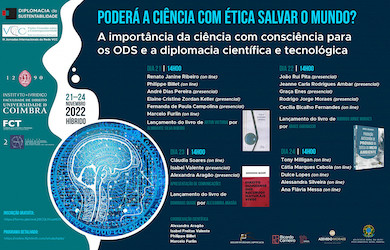
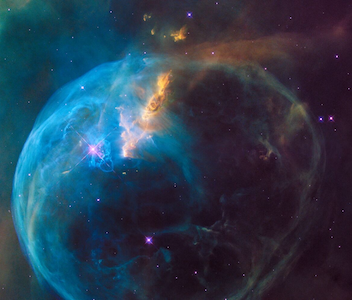
‘Ground Bias: A Driver for Skepticisms about Space Exploration’ by Tony Milligan (Cosmological Visionaries, KCL) has now been published in the Planetary Science section of Frontiers in Astronomy and Space Sciences. The article develops the concept of ‘ground bias’ as a modern tendency to over-separate Sky and Ground, leading to a variety of different forms of skepticism about ambitious human activities beyond Earth and beyond the use of satellite systems in orbit. The paper is part of a cluster of publications by Milligan about space, bias, and Indigeneity, which will be appearing over the coming months. It begins the slow task of making sense of the bias appealed to in his recent publication, ‘From the Sky to the Ground: Indigenous Peoples in an Age of Space Expansion’, a bias which is both modern and characteristically absent from Indigenous cosmologies once the latter are seen as more than ecologies.


‘From the Sky to the Ground: Indigenous Peoples in an Age of Space Expansion’ by Tony Milligan (Cosmological Visionaries, KCL) has now been published by Space Policy, and is available open access on the journal website and on the KCL Website. The article develops the claim that Indigenous peoples have a distinctive role in the long-term stabilization of space expansion by humanity. Against the stereotype of uniform Indigenous hostility to space programs, the paper argues that Indigenous cosmologies do not typically suffer from ‘ground bias’, and do not radically separate Sky and Ground. This allows a core argument from belonging to be set up, to the effect that Indigenous perspectives can inform the sense of belonging that we will increasingly need. One which is larger than Earthly and ecological, and which can be stable over multiple generations in the face of the risk of program abandonment as social priorities and values shift and change.
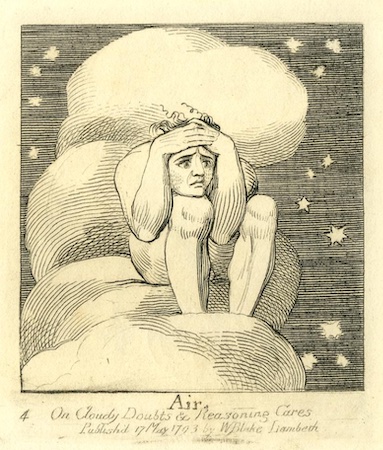
Tony Milligan (Cosmological Visionaries, KCL) presented a talk titled ‘Ground Biases’ and Katherine Swancutt (Project Lead of Cosmological Visionaries, KCL) presented a talk called ‘Cosmologies: The Air is Thick with Spirits and Forces of Nature’ at a workshop exploring AIR, the first in a series of collaborative elements-themed events between KCL and ASU in the field of Environmental Humanities.
IMAGE CREDIT: The Trustees of the British Museum (CC BY-NC-SA 4.0)
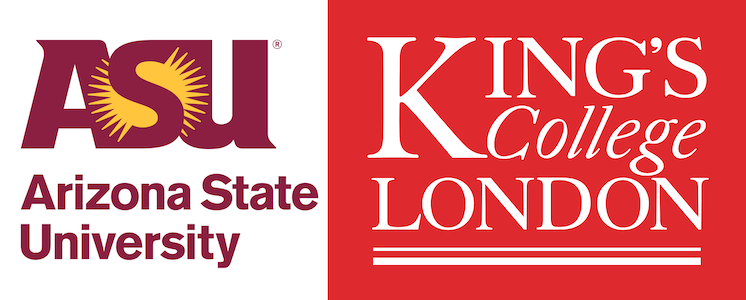

Katherine Swancutt (Project Lead of Cosmological Visionaries, KCL) will present a keynote at the ‘Nature Religions, Science and Technology’ conference co-organized by The Institute of Philosophical Studies, Science and Research Centre of Koper, and The Faculty of Theology and Religious Studies, University of Groningen. Her talk will explore how ‘cosmological visions’ unsettle animistic and scientific ways of relating to the world. It will offer an ethnographic vignette of how an ethnohistorian and animistic priest set out, at the request of a local official, to address deforestation in Southwest China by ‘re-animating’ their peers with a new cosmological vision – only to be met with a counter vision that revealed a certain detachment from the world in animistic-cum-scientific terms. Arguing that creativity like this opens up spaces for re-envisioning what it means to be alive to the world as an animist, scientist, or both, the talk will join a collection of conference papers to be submitted as part of a special issue of Religions edited by Gorazd Andrejč (University of Groningen / Science and Research Centre Koper) and Victoria Dos Santos (Science and Research Centre Koper), titled ‘Religion, Science and Technology in Pantheism, Animism and Paganism’. The talk will also be presented at the SOAS China Institute Seminar Series on October 17th 2022.

Tony Milligan (Cosmological Visionaries, KCL) will deliver August’s Blue Marble Institute for Science seminar on space settlement on August 25th at 9:00am US Pacific Time. Tony will be challenging the exaggerated separation of space and terrestrial issues of identity and belonging. The talk will introduce the concept of ‘ground bias’ in order to make sense of why deliberation about space is mistakenly seen as marginal to key terrestrial issues. This concept, of a special kind of bias, will also figure in a series of papers due for publication in the autumn and in a keynote at the forthcoming Forming and Exploring Habitable Worlds (hosted by the University of Edinburgh’s School of Geosciences, and supported by the Royal Astronomical Society). This Blue Marble talk, Becoming Martians, will consider ideas of belonging, Indigeneity, and the valuing of place under imagined and extreme conditions of initial settlement on Mars.

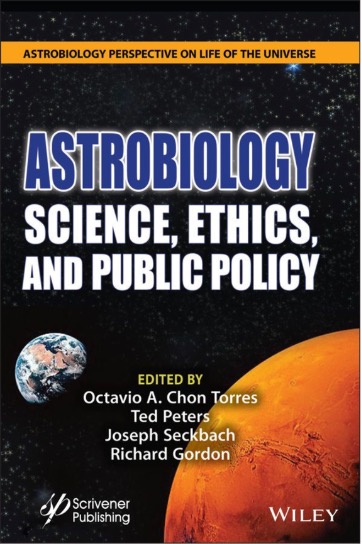
A Daily Philosophy blog for July 9th looks in some detail at a recent paper on ‘The Ethics of Biocontamination’ by Tony Milligan (Cosmological Visionaries, KCL), published in the Chon Torres, Peters, Seckbach and Gordon volume Astrobiology: Science, Ethics, and Public Policy (Wiley 2021). Milligan’s paper looks at the 2019 incident in which micro-animals (Tardigrades) were accidentally crashed onto the lunar surface, in a dormant state. This seems to be a matter of some importance. But our reasons for thinking of it as important are entangled with our attitudes towards life as something important, even in its more rudimentary forms. The thought is not that micro-animals, or even microbes, might have rights, but that talk about inherent value nonetheless has a role to play. The metaethical implications of this claim have been considered in a companion Tony Milligan paper on ‘Astrobiology and the Outer Limits of Human Ethics’ published in Ian Crawford’s edited volume on Expanding Worldviews: Astrobiology, Big History and Cosmic Perspectives (Springer 2021).
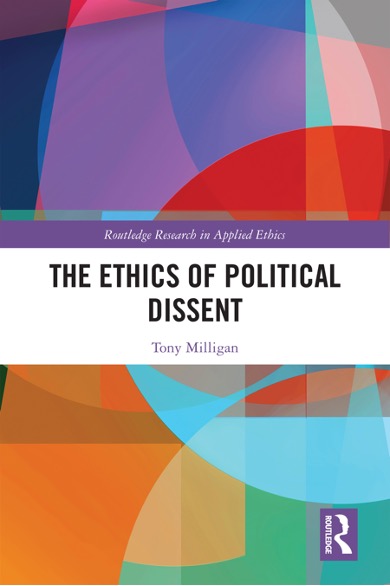
The latest monograph by Tony Milligan (Cosmological Visionaries, KCL) has just been released by Routledge. The Ethics of Political Dissent explores the limitations of ethical principles and argues that we cannot read moral character off of political alignment. The focus of the text is upon dissent in the West, with consideration of issues such as the removal of statues and response to antisemitic shootings. The arc of the book moves from an opening chapter, ‘The Fable of the Colonial Ethicists’, which identifies the role of colonialist assumptions in shaping the very structure of ethics drawn upon in political critiques. These assumptions are about the need for ethics to be principled, compact, rule-like, and portable from one place to another. The arc then moves towards a closing chapter that deals with the difficult relation between love and politics. When engaged in political action, agents do not cease to be who they are, but who they are is always shaped by the things that humans love and the ways in which they do so. A preview is available here.

A new book chapter ‘The Threshold of the Cosmos: Priestly Scriptures and the Shamanic Wilderness in Southwest China’ by Katherine Swancutt (Project Lead of Cosmological Visionaries, KCL) has just been published in Diana Espírito Santo and Matan Shapiro (Eds). The Dynamic Cosmos: Movement, Paradox, and Experimentation in the Anthropology of Spirit Possession (London, New York, Oxford, New Delhi, Sydney: Bloomsbury, 2022).
The chapter asks: What would the cosmos be like if it were filled with shapeshifting spaces and cosmological passages, rather than linear thresholds that compartmentalize it into discreet locations? Anthropologists have classically associated thresholds with the ritual process, where they feature as hard and static boundaries that persons cross in space and time. But the Nuosu of Southwest China inhabit a world filled with multiple shapeshifting thresholds, which, like a Mobius strip, respond to the pressures exerted within and outside of them. Nuosu priests cross multiple thresholds of learning to master their scriptures, whereas shamans master spirit helpers from the wilderness through a rite of passage conducted by priests. Assisted by spirit helpers, priests and shamans routinely exorcize ghosts across multiple thresholds of the home. Yet spirit possession is the most difficult threshold to anthropologize, since this is where the priest’s and shaman’s crafts are the most imaginative, creative, and shapeshifting of all.

Tony Milligan (Cosmological Visionaries project, KCL) will be presenting on ‘Do We Have a Right to Knowledge about Origins?’ at AbSciCon 2022 on Thursday May 19th 2022, as part of the session on ‘Scientists, Publics, Planetary Protection and Post-Detection: Urgent Discussions for the 2020s’. This American Geophysical Union/NASA event is a key biennial forum bringing together the astrobiology community. Tony’s paper is one of a pair on the theme on origin stories, drawing comparisons between conventional scientific stories about origins, and Indigenous storytelling. The second paper, ‘Two Kinds of Story about Origins: Astrobiological and Indigenous’, will be presented as a keynote at Astrobiology and Society due to be held in Höör, Sweden, on 3rd and 4th of June 2022 and hosted by the European Institute for Astrobiology.



‘Animal Telos and Preference Adaptation’ by Tony Milligan
(Cosmological Visionaries project, KCL) has been published in the 2022 edition of the Journal of Applied Animal Ethics Research
as part of a special edition to celebrate the lifework of Bernard Rollin on bioethics and the place of ethics within science. Rollin’s work is particularly noted for the role it gives to animal telos, i.e., natural purposiveness, as a factor in ethical deliberation which is consistent with a scientific point of view. Papers by Lynne Kesel, Holmes Rolston III, Steve Sapontzis, Tony Milligan, Donald Crosby, Peter Markie, and Richard Kitchener were presented to Bernie Rollin at Colorado State University in October 2021 and have been published together as a Festschrift. The Milligan paper looks at the biomodification of non-human telos, and the harms that this may involve even in cases where modification could be justifiable for welfare reasons.

An extended exchange of ideas about property rights between Tony Milligan (Cosmological Visionaries project, KCL) and Rebecca Lowe (Adam Smith Institute) was posted on March 2nd by the Institute of Art and Ideas. The exchange, ‘Who owns the moon?’, considers the relevance of John Locke’s classic advocacy of property rights for the lunar surface. Lowe argues strongly in favour of dividing up the surface into a form of Lockean quasi-property held by private agents. Milligan argues that Locke’s model turns out to be a bad fit for the lunar resources in question. Strategic lunar resources, such as Thorium, Uranium, and the best deposits of Helium 3 are far too concentrated for a Lockean option to work in any sort of fair and sustainable manner. Drawing upon recent work on lunar and space resources (particularly the ongoing Elvis, Milligan and Krolikowski research collaboration), he argues for a gradual transition to a stable state economy off-world, a plurality of quite different ways of relating to resources, recognition of multiple ongoing claims upon the same places, and protection of the lunar surface.

The British Museum’s Anthropology Library and Research Centre, in conjunction with the Royal Anthropological Institute, is pleased to present ‘Reviewer meets Reviewed’, a discussion between Professor Graham M. Jones (Massachusetts Institute of Technology), author of Magic’s Reason: An Anthropology of Analogy, and Dr Katherine Swancutt (Project Lead of Cosmological Visionaries), who reviewed the book in the Journal of the Royal Anthropological Institute. This virtual seminar will take place on 20 January 2022, 16.00-18.00 GMT, and will be made available on the RAI’s YouTube channel here.
RAI event calendar with link to register: https://therai.org.uk/events-calendar/eventdetail/747/-/reviewer-meets-reviewed-magic-s-reason-an-anthropology-of-analogy

Supercreativity Podcast #312 opens 2022 with an Animal Ethics conversation between the host, James Taylor, and Tony Milligan (Cosmological Visionaries project, KCL). The conversation focuses upon the complexity of our relations with non-human animals, why these reach beyond familiar theories about animal rights and how they relate to issues in AI. The show ends with a brief consideration of proposals that our moral community needs to expand into space and needs to understand our place in ways which are cosmological and not only ecological.

An online first version of a paper by Tony Milligan (Cosmological Visionaries project, KCL) for the 2021 Harvard Review of Philosophy is now available. ‘The Tolerant Animal Advocate’ pictures an ordinary agent who combines partisanship in support of non-human animals with tolerance. It goes on to argue that the charge of hypocrisy is overused by those whose tolerance falls short, because dietary practice alone is an insufficient basis for assessing the character of others. The post-proof is available here; and the first view version is available here.

A poster designed by Brian Miller and based on ’How much of the Solar System should we leave as wilderness?’ by Martin Elvis (Center for Astrophysics, Harvard & Smithsonian) and Tony Milligan (Cosmological Visionaries project, KCL), in Acta Astronautica, is on show as part of the Smithsonian FUTURES exhibition now running in the Art and Industries Building in the National Mall, Washington DC. The poster imagines the future in 2071, and is linked to a Short story by Canadian Science Fiction author Madeline Ashby in Slate Magazine, which also draws upon themes from the ongoing space and society research collaboration by Martin Elvis, Tony Milligan and Alanna Krolikowski (Center for Science,
Technology, and Society, Missouri University of Science and Technology). The poster is based around the Elvis-Milligan Principle that an economic system expanding at a historically normal rate should use at most 1/8th of the resources of the Solar System. The exhibition is a collaboration between the Smithsonian Institution and the Center for Science and the Imagination at Arizona State University and is due to run from 20 November 2021 to 6 July 2022.

‘SuperTCM: A biocultural database combining biological pathways and historical linguistic data of Chinese Materia Medica for drug development’, on which Lena Springer (Cosmological Visionaries project, KCL) is a lead author, has appeared in Biomedicine & Pharmacotherapy. The article explores how ethnopharmacological rigour in the drug development of Traditional Chinese Medicine (TCM) requires a scientific multi-linguistic naming
of Materia Medica in China that includes their natural sources, crude drugs, and mixed recipes. Naming these Materia Medica offers a powerful tool for sorting their particular ethnic, historical, and easily
confused pharmaceutical trade names. A new website and database at Charité Medical University Berlin integrates all these names from different disciplines
and the pharmaceutical literature, positioning them further within a second set of scientific content. Mapping these Chinese names against standard disease names, molecular ingredients, genetic
targets, the KEGG database, and illustrative maps of these biological pathways, the SuperTCM website makes medicines from China accessible to different developers of new plant-based
treatments and combinations of drugs.

Edited by Katherine Swancutt (Project Lead of Cosmological Visionaries, KCL), Crafting Chinese Memories: The Art and Materiality of Storytelling contains three of her contributions: ‘Introduction - Materiality, Imagination and the Memorable’, ‘Jailhouse Blues, Storytelling and Becoming the Stuff of Legends in Southwest China’ (co-authored with Jiarimuji 嘉日姆几), and ‘Conclusion - Layers, Traces, Fields and Storehouses of Memory’.
Through an interdisciplinary conversation with contributors from social anthropology, religious studies, film studies, literary studies, cultural studies, and history, Crafting Chinese Memories is a novel book which addresses how works of art shape memories, and offers new ways of conceptualising storytelling, memory-making, art, and materiality. It explores the memories of artists, filmmakers, novelists, storytellers, and persons who come to terms with their own histories even as they reveal the social memories of watershed events in modern China.
A blog entry about this book is available here.

A new book chapter ‘After the Permafrost: A Provisional Outline’
by Tony Milligan (Cosmological Visionaries project, KCL) has just been published in Martin Bohle and Eduardo Marone (Eds.) Geo-societal Narratives: Contextualising Geosciences (Cham, Switzerland: Palgrave Macmillan, 2021). The chapter looks at our emerging environmental predicament as a case of tragic dilemma, where we cannot protect all the things that we value in the ways that we would like to. It outlines how a concept of ‘integrity of place’ can help us continue to value landscapes even under the impact of loss.

‘The Chicken and The Egg: Cracking the
Ontology of Divination in Southwest China’ by Katherine Swancutt (Project Lead of Cosmological Visionaries, KCL)
has been published open access on the web page of Social Analysis in Volume 65, Issue 2. This article
explores the role of cosmological proliferation in Southwest China with reference to forms of divination that make use
of chickens and eggs. It shows that both divine agency and the calculations of diviners can be integral to divination,
other predictive methods, and the ‘hatching out’ of new creation stories.

A forthcoming Nina Kojima article ‘Shall we stay...or should we go?’
in the September 2021 edition of Spaceflight carries coverage of work by long term-collaborators Tony Milligan (Cosmological Visionaries project, KCL)
and James S.J. Schwartz (Wichita State University) on the ethical dimensions of space exploration.
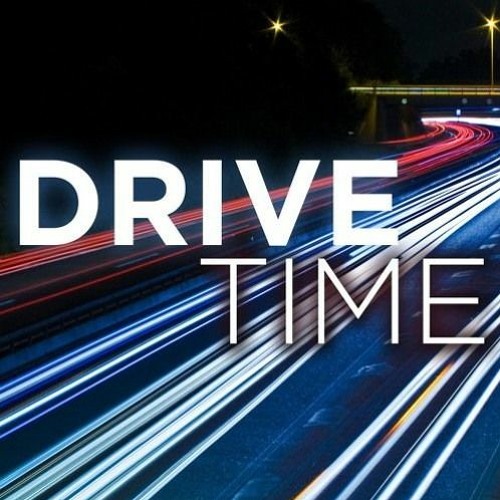
In this 10 minute slot on the Voice of Islam’s weekday Drive Time Show, Tony Milligan (Cosmological Visionaries project, KCL) answers questions about environments in space, the utilisation and protection of the Moon and Mars, and the slow global pressures that may eventually result in a new space treaty involving China and the US. The interview is available as a podcast here.

An early view of ‘“It’s Scientific!” Play, Parody, and the Para-ethnographic in Southwest China’ by Katherine Swancutt (Project Lead of Cosmological Visionaries, KCL) has been published as open access on the web page of the Journal of the Royal Anthropological Institute. The definitive
version will appear in Volume 27, Issue 3 of the JRAI in September 2021.
This article explores drinking games that play with the scientific, and anthropology in particular, in Southwest China. It shows how ethno-historians from
an ethnic minority group of China alternately parody or champion all things scientific.
Update 5 August 2021: The definitive version is now available as Open Access here.

Tony Milligan (Cosmological Visionaries project, KCL) has collaborated with James S.J. Schwartz (Wichita State University)
on an op-ed for The Space Review, describing the history of ‘space ethics’ and its important role in the space sciences.
IMAGE CREDIT: Daein Ballard CC BY-SA 3.0

Katherine Swancutt (Project Lead of Cosmological Visionaries, KCL), Tony Milligan (Cosmological Visionaries, KCL), Elisa Tamburo
(Cosmological Visionaries, KCL) and Lena Springer (Cosmological Visionaries, KCL) took part in the first King’s College London partnering initiative with Arizona State University. The event was an ideal opportunity to introduce the Cosmological Visionaries project to scholars from both institutions during discussion about a possible transatlantic Centre for Environmental Humanities.

Philosophical Transactions of the Royal Society A has just published ‘Concentrated
Lunar Resources: imminent implications for governance and justice’, the latest article in an ongoing collaboration between Tony Milligan (from the
Cosmological Visionaries project, KCL), Martin Elvis (Center for Astrophysics, Harvard & Smithsonian), and Alanna Krolikowski (Center for Science,
Technology, and Society, Missouri University of Science and Technology). While there is a tendency to think of tensions in space as the result of
conflicting ambitions between state agencies and the private sector, the article highlights the more fundamental problem of limited and exhaustible strategic
resources on the Moon. Multiple and legitimate stakeholders from science, lunar protection and the private sector are all targeting the same limited sites
such as cold traps, the Peaks of Eternal Light down in the South Polar Region, the relatively small number of iron rich areas which result from asteroid
impacts, and areas with the highest concentrations of Helium-3. The authors review the strategic resources and sites and consider issues of policy response
and timeliness: what needs to be done and when. Various options are considered to deal with crowding, and a ‘veil of ignorance’ argument is set out to support
the claim that it is better to get lunar actors to establish some provisional norms now, before strategic programs become fixed, and before some of the advantageous
pressures of uncertainty are removed.
Interview on RTVI
Coverage in Forbes
Coverage on Science Daily
Coverage on The Conversation
IMAGE SOURCE: Picture taken by NASA Lunar Reconnaissance Orbiter
IMAGE CREDIT: NASA/GODDARD SPACE FLIGHT CENTER/DLR/ASU; OVERLAY: M. ELVIS, A. KROLIKOWSKI, T. MILLIGAN

